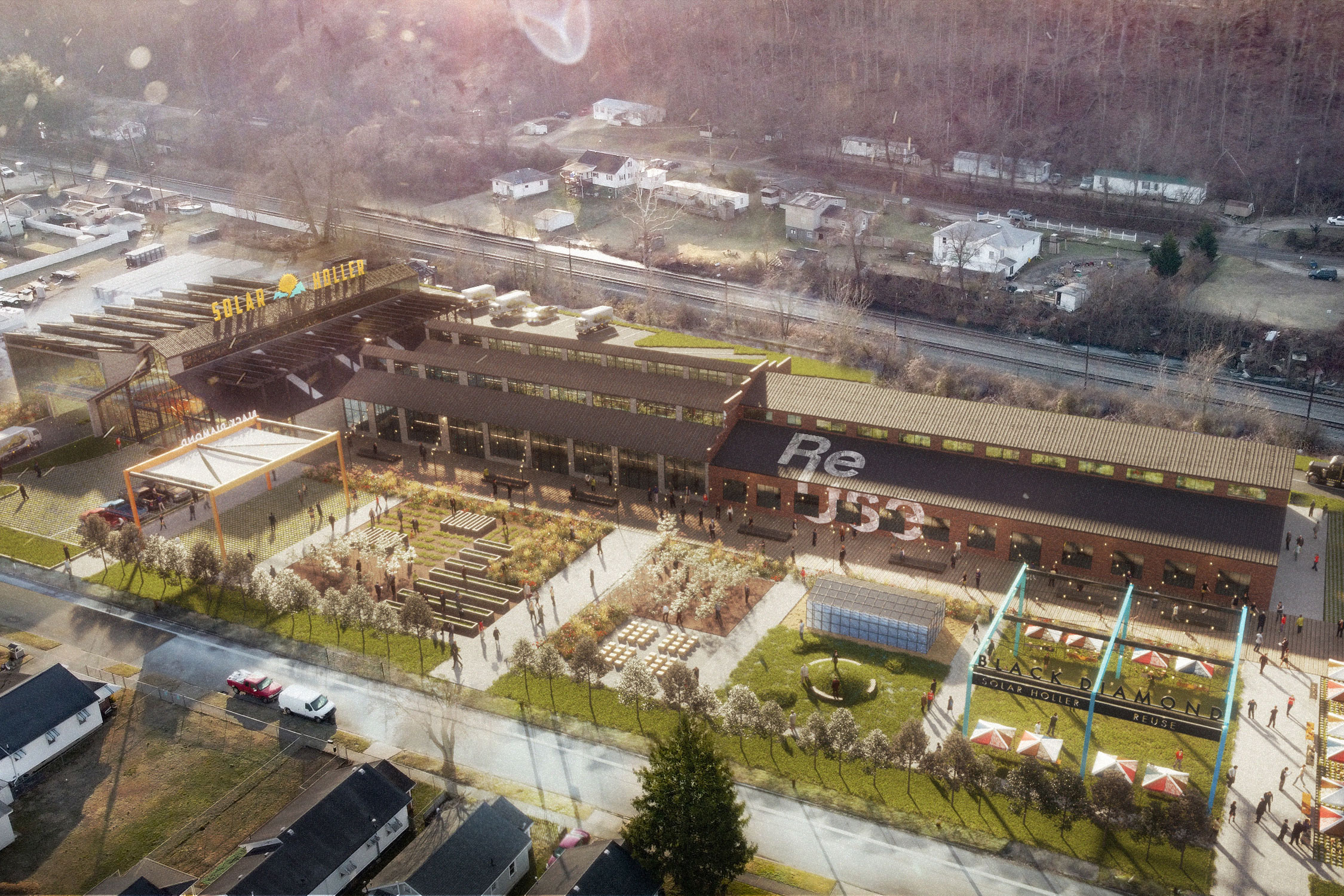Story at a glance:
- The Black Diamond project in Huntington, West Virginia will be home to solar training and more.
- The project is being designed by WXY and Edward Tucker Architects along with SB Friedman for Coalfield Development.
- The site expands on exciting work already happening in the area while repurposing old architecture.
In Huntington, West Virginia, on the Ohio River and bordering Kentucky and Ohio, sits a former World War 1 biplane factory. It’s also now the site of a future hub for solar logistics and job training run by Solar Holler—a full-service solar developer and installer.
“We get really excited about these types of buildings,” says David Vega-Barachowitz of WXY architecture + urban design. “They have a huge amount of flexibility and are able to play a role as an extension of public space that buildings often can’t.”
What is the Black Diamond project?
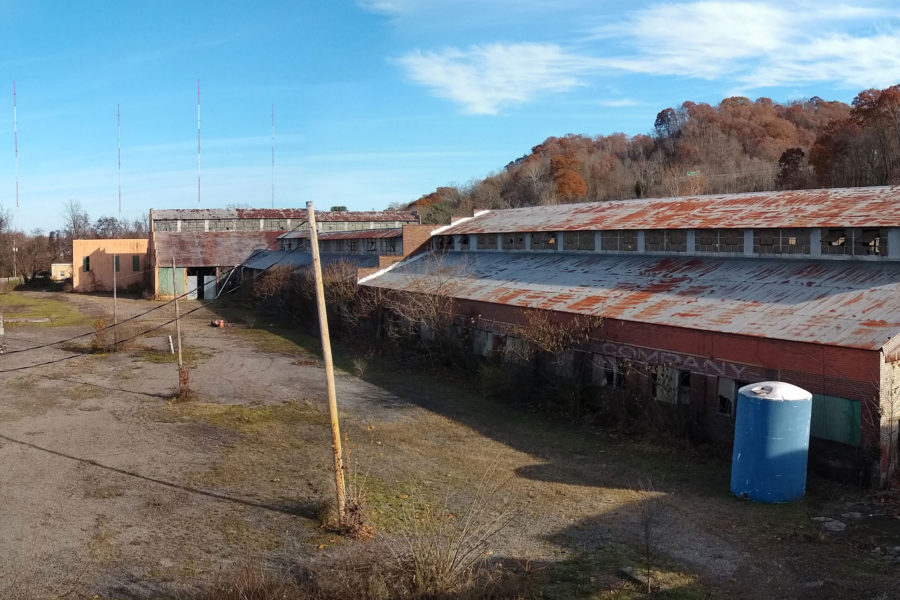
The former industrial building and future home to Solar Holler headquarters. Photo by Nick Guertin
The Black Diamond project aims to spur job growth in economically distressed and coal-impacted counties in southern West Virginia by creating clean energy and green economy jobs, according to West Virginia Public Broadcasting. The coalition will support the transition from coal to solar power and implement sustainable reuse projects on abandoned mine sites as well as rejuvenate brownfield sites with new facilities and develop entrepreneurial programs to support employment.
WXY and Edward Tucker Architects are designing the major adaptive reuse project along with SB Friedman for the community-based group Coalfield Development—a leader of the new ACT Now Coalition in southern West Virginia. The Revitalize Appalachia plan promises to revitalize a long-closed and badly polluted factory into a hub for solar and renewable energies.
When WXY architecture + urban design first visited the project site, they were thrilled by its potential. “I think what’s most exciting is the interplay between the interior and exterior public spaces. Often when we think about public space and landscape one thing is outside, and the other is inside.”
In this project, the design team and client wanted to design an experience that moved people through the spaces while interacting with the landscape. That will also allow the design team to preserve and reuse parts of the site.
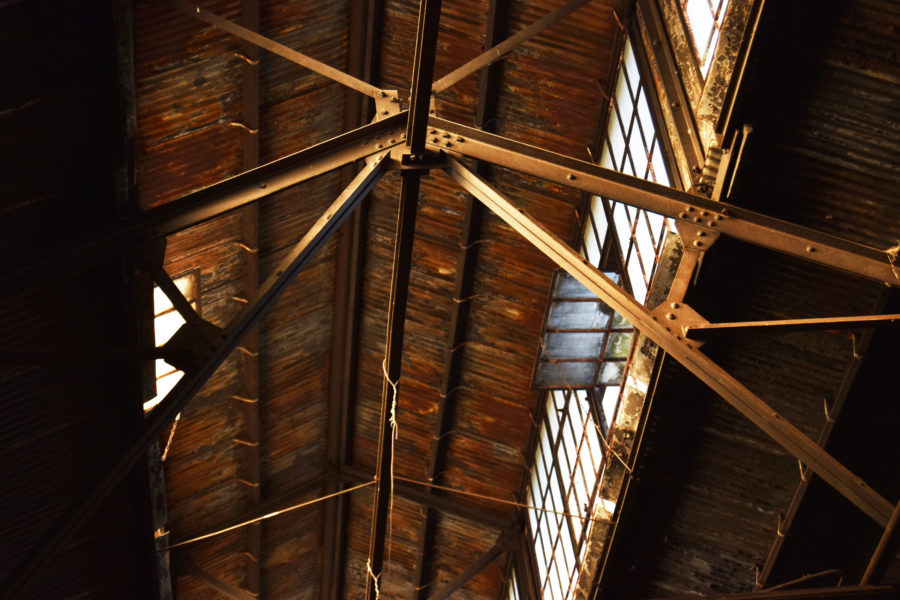
Photo by Ric MacDowell
“We’re able to play with some pieces of gantry cranes and older industrial architecture to make something,” Vega-Barachowitz says. “It’s an important message not only for the reuse program that’s on the site but also in reflecting back on this economic engine and community center they’re trying to create in this area.”
The project’s estimated construction completion is in 2026.
How did WXY get involved?
WXY began working with the Coalfield Development group in fall 2021.
“We’ve done a fair amount of work on adaptive reuse projects, really finding a nexus between rethinking historic structures and community development. Coalfield saw some of our past work—especially work on this area of New Jersey called Kearny Point—and saw a real synergy with what they were thinking about doing with the Black Diamond site in Huntington, West Virginia,” Vega-Barachowitz says.
What is the mission of this project?
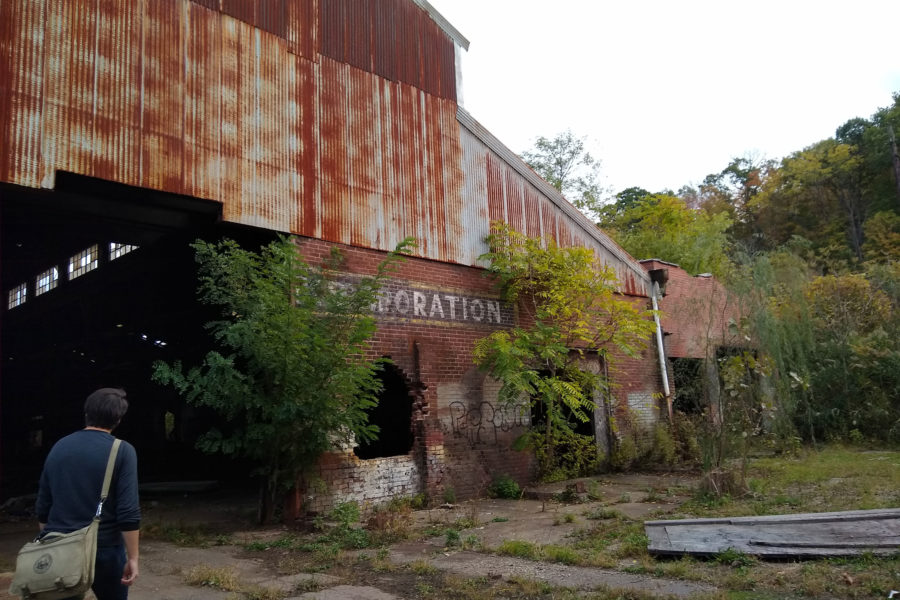
Photo by Nick Guertin
The WXY team was tasked with thinking through the possibilities as the site is home to an older series of structures as well as a formerly industrial site that interacts with a fairly low-density neighborhood. They had to help the team at large reimagine how to reutilize those buildings as well as accommodate a new headquarters for Solar Holler.
“They’re really at the leading edge of greening the Appalachian economy,” Vega-Barachowitz says of Solar Holler. “Then they also have a reuse and upcycling facility on the site. Both of these facilities are partially housed in a prior redevelopment that’s a former garment factory that was redeveloped about a decade ago.”
The area is also already home to a wood shop, artists’ galleries, storage and distribution for Solar Holler, and more. “We are kind of building on that success story,” Vega-Barachowitz says.
What else is in this plan?

Rendering courtesy of WXY architecture + urban design
WXY worked with local architects at Edward Tucker Architects and a site consultant to develop a plan for three programs. The first is the reuse and recycling program in the southernmost building. “It’s very cool and brings people in to drop off materials. It really ranges from metal and recycled building materials to even household items. It’s community-facing,” Vega-Barachowitz says.
The second building is envisioned to be a community space, office, or light industrial space.
The third is the Solar Holler space, which WXY has partly proposed a new build for while strategically reusing parts of the old structure.
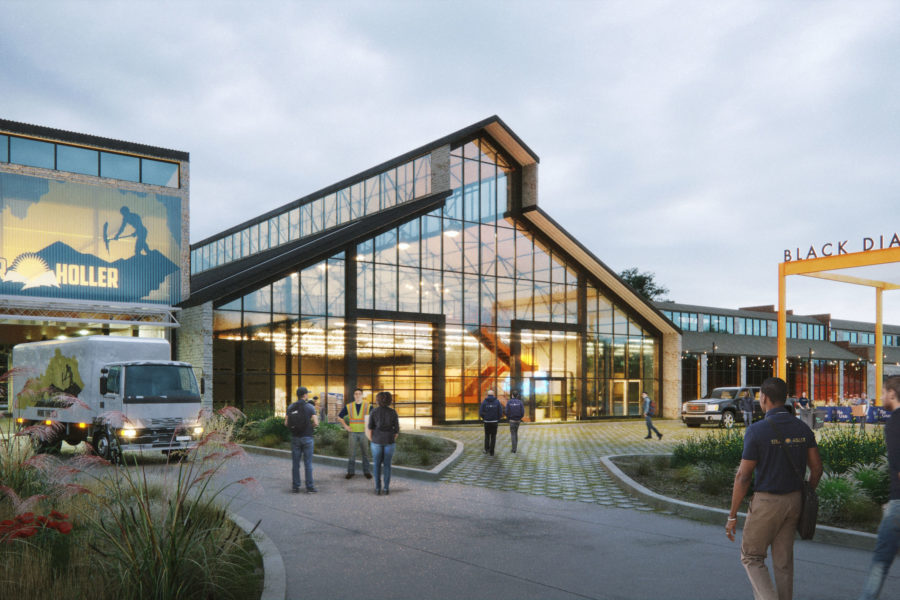
Rendering courtesy of WXY architecture + urban design
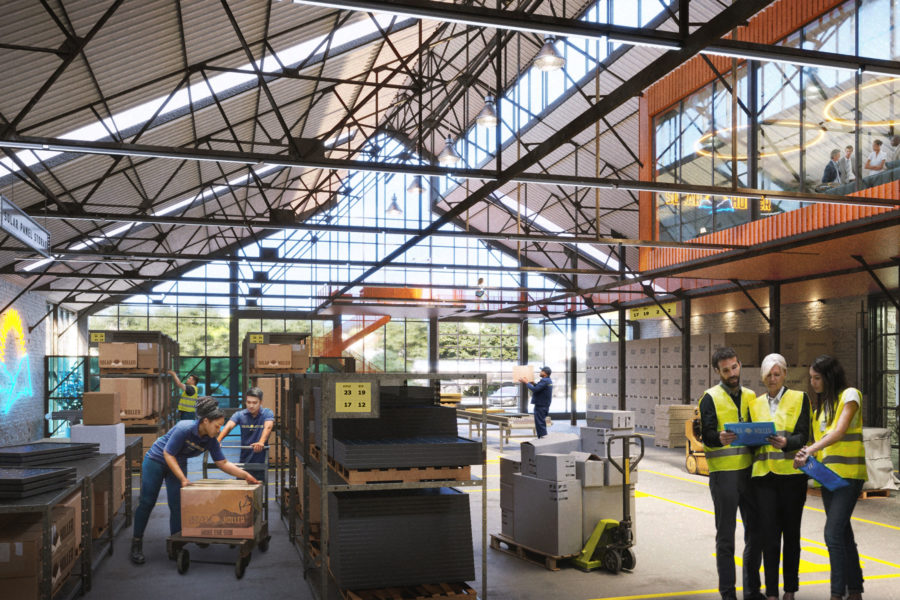
Rendering courtesy of WXY architecture + urban design
While the project is still in the master planning stage as of November 2022, Vega-Barachowitz says they have uncovered some interesting industrial artifacts they felt were worth keeping and hope to see in the final design. These include things like a large series of gantry cranes they want to reuse as part of the overall landscape strategy.
“We know this building will be meant as an important test case and exhibition space in a way for Solar Holler, which the other property nearby has definitely also embraced as well. We’re not at the point where we’re figuring out all of the materiality and green building materials yet, but that’s central to Coalfield’s mission,” he says.

